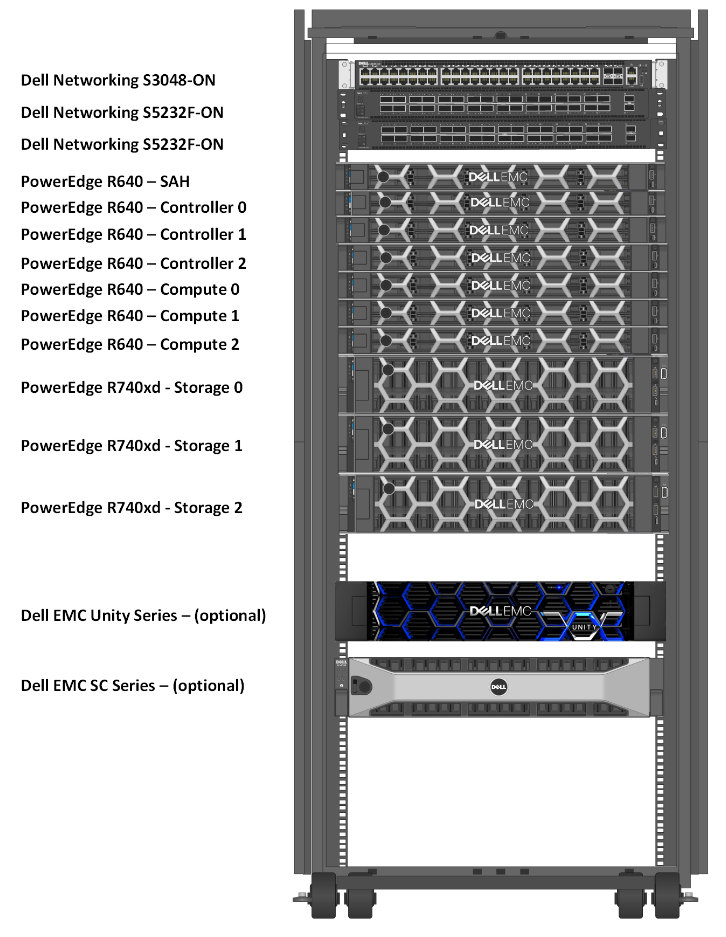Why Bare Metal?
As the world makes progress towards Software Defined Everything with virtualization, abstraction and containerization. Bare Metal management is becoming the center of attention. That means consumers can deploy platforms, like vSphere, OpenStack, Kubernetes, and direct bare metal workloads. Bare metal is primarily used for automated hardware lifecycle management and configuration at the data center, edge and remote sites. This allows automating the infrastructure in a uniform, consistent manner across all sites.
In addition to making the infrastructure easier to consume, operate and manage, bare metal deployments provide advantages with the performance, resource utilization, costs and even regulatory compliance of the data center. In fact, Dell & AT&T are working with the Airship community to add support for bare metal management by Airship utilizing Ironic
Where does Ironic fit in?
“We live in an API-driven world,” says Julia Kreger at the Open Infrastructure Summit, Denver, April 2019, while announcing OpenStack Foundation’s Bare Metal Program, Ironic.
Ironic allows users to manage the end to end lifecycle of bare metal infrastructure just as if they are managing virtual machines. The adoption of Ironic is growing at a rapid scale with a quarter of all OpenStack deployments relying on it. Dell EMC Hardware enables many of the production deployments to host cloud applications and container frameworks like Kubernetes on bare metal infrastructure. In addition, OpenStack TripleO (OpenStack-on-OpenStack) and Red Hat OpenStack Platform (OSP) director (OSPd) utilize Ironic for OpenStack cloud deployment on bare metal.
Ironic is important for Edge Computing user stories because, Edge Computing requires a small foot print and the ability to manage and deploy application instances over WAN networks. The new features added in the Train release, get us that much closer to being able to manage zero or low touch remote deployments. – Beth Cohen, OpenStack Foundation Edge User Group and DMTS – NFV/SDN Network Product Strategy, Verizon Business Group
Dell EMC and Ironic
Millions of compute cores worldwide are managed using OpenStack Ironic and Dell EMC remains a popular infrastructure/NFVi choice.
Dell EMC has been a supporter of OpenStack and the Ironic project since it’s conception phase. We ensure that Dell EMC servers support all the relevant Ironic drivers: IPMI, Redfish and iDRAC. iDRAC drivers are embedded within every Dell EMC PowerEdge server and provide functionality that helps IT administrators deploy, update and monitor the serves anywhere, anytime. Starting from OSP 13, Dell EMC servers are the first to be certified for Red Hat Open Stack Bare Metal.
Our latest releases are industry-leading to ensure that we stay current with OpenStack.

With the OpenStack Train release, Dell EMC has included:
- An update to the latest iDRAC driver for R640, R740, R740xd, DSS9100
- Support for the latest 2nd Generation Intel Xeon Scalable Processors
- Support for PowerEdge Boot Optimized Storage Solution (BOSS) controller as a RAID controller
- Include PERC H740P
- Transition to a Hybrid driver with Redfish/WSMan driver, including support for Redfish OOB introspection, power and management interfaces
- Improvements to RAID interface, improved queue management, improved robustness
Ironic maintains third-party CI which tests all proposed code changes against vendors’ supported drivers and hardware. Dell EMC is #1 in Converged Infrastructure and is running Ironic third-party CI on PowerEdge and Extreme Scale Infrastructure (ESI) servers. We have the most comprehensive driver coverage – testing IPMI, Redfish and iDRAC on both UEFI and BIOS boot modes.
Dell EMC at the OIS Summit, Shanghai
Join us at Open Infrastructure Summit in Shanghai this week! We will be in Gold Hall booth #SL3 sharing how Dell Technologies can accelerate your OpenStack Solutions. We will have experts on hand to talk about how our Ironic solutions can help your business grow.
Can’t be at the event? We have documentation that provides more information on managing. Check out our Telco Service Provider Solutions and see how Dell Technologies has infinite solutions from the core to the edge to help you on your journey to 5G.